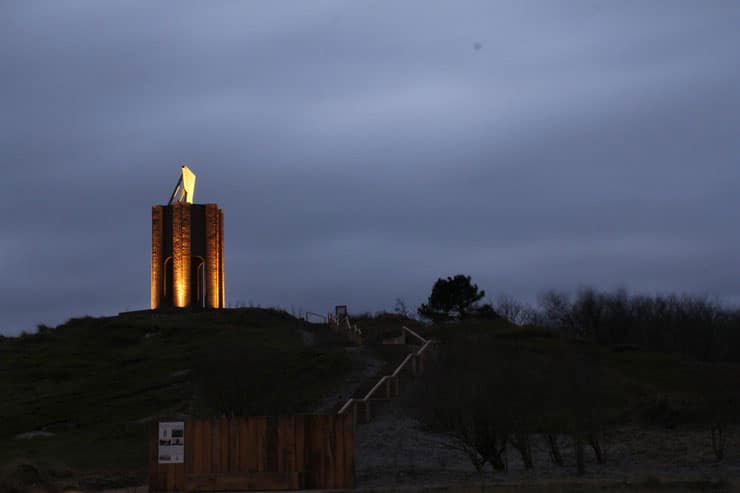- ABOUT
- JUDGING
- CONTACT
- MORE
- 2024 Entries
- Installations 2024
- Past Winners
- Subscribe
- [d]arc directory
- arc magazine
- darc magazine
The Cape, Germany
ProjectThe CapeLocationNorderney, GermanyLighting DesignOC|Lichtplanung, Diepholz, GermanyArchitectFrank-Dieter Stucken, GermanyClientStadt NorderneyLighting SuppliersWe-ef, iGuzzini, Insta
The Cape, built in 1848 on the German Island Norderney has a strong historic meaning. Well visible on the top of the 15-metre high buoy dune in order to increase the safety of the shipping, the first Cape only consisted of hexagonal foundations built with wood sealed up by pitch. On top of it was mounted a piece of wood upside down where a fire was lit – the so-called ‘Blüse’.
The wooden Cape was substituted by a building of bricks in 1871 but due to strong weathering it had to be completely rebuilt in 1930 and in 2017. Since its last reconstruction the landmark is visible even in the darkness in a way that the singular architecture of the building becomes evident.
The bold structure of the building, with its round archways and its square wall pillars, is stressed by a sentimental lighting installation, which creates interesting contrasts by appealing to the game between light and shadow. Above it – in the vacuum – the navigational sign shines in its controversial geometry and thus becomes a real eye-catcher.
The lighting concept for the Cape is based on the results of the trial lighting. The six wall pillars are floodlit by ground-recessed luminaires in warm white colour temperature. The remarkable structure of the bricks creates a vivid impression that is stressed by the apparent disappearance of surfaces above the archways and the selective renunciation of light within the tower.
The generated plainness of the building during the dark hours is interrupted by the accurate emphasis of the archways in neutral white colours. The centred ground recessed luminaires in the pathway illuminate the arches; this special interaction of light and darkness automatically turns the visitor’s gaze upwards.
Here, at the top of the building, the navigational sign shines all around the island and thus gives orientation.
Illuminated by a spotlight installed in the inner tower it raises – in pure white – above the hexagonal foundations and strongly appeals to inhabitants and visitors of the island. Once having ascended the unspoiled steps towards the Cape, visitors are rewarded by an exciting view, which leaves space, depending on the level of twilight, for diverse interpretations of the island shrouded in darkness.
The project is promoted by the Federal Ministry of Education and Research.








